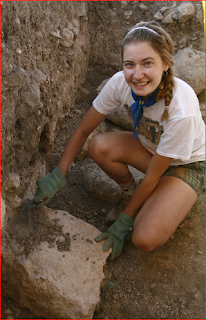treasure places in kilis
Kilis was a flag of Aleppo province during the war, which was built by Yavuz Sultan Selim on 23 August 1516 around the village of Mercidabık. The Kilis was occupied by the British and then by the French in December 1918 with the Armistice of Mondros. Armenians in the region unite with the French and give the Kilis the hardest time. Kilis Kuva-i Milliyesi (Kilis Kuva-i Milliyesi), which was established in Kilis with the start of mobilization in all dormitories, fought heroically by combat with enemies, and in 1921 it won its own liberation and went to help with Gaziantep. When Kilis became a city in the city of Gaziantep, it became a province of Gaziantep in 1927. And it became a province on June 6, 1995.TURKISH SIZES AND GAMES IN KILIS REGION
Egypt-Syria During the time of the Turkish Slave State, Kilis and its surroundings consisted of Oguz tribes. We explained the reason why Kayılar came to Kilis. The origin of Kayılar is based on the Ergenekon Epic. One of the Göktürk princes who escaped to the place called Ergenekon was Kayı and the other was Dokuzoğuz. Hüsamettin Çoban Bey and Gündüzalp and Gökalp Kayıların Beyleri were the masters. (Hüseyin Namık Orkun. Turkish History. Volume 4 p. 138) "Küçtemurlar", which is a part of them, still lives in Kilis and carries this surname. We estimate that the Kayis were transformed into urban life in Kilis and the mouth of Kilis was formed by their influence. People from the Ottoman dynasty who are descendants of the Kair still use the words "Sölorum" and "Anlorum"; Kilis, Adiyaman region even under this influence, Armenians also speaks similar to this mouth.
THE BODIES OF MAJOR TURKMEN IN KILIS
Beydili are:
Their oruks (congregations) are; Taşbaşı, Bozkoyunlu Şimdanlı, Kuzacaklu, Başıbüyük or Karahasanlı, Süleli, Otamışlı Mahmudhacılı, Guzanlu, Beymeşelü, Hacı güzel, Seyhlu, Göneç, Tatalu Emenekli Döğeri, Bayınlu, Emenlük, Haliceli, Kaazlu, Cumalu, Bekillu, Büyükkaracalu, Yağrıcı , Necmeddinlii, Gulen, Kurds, Cakirlu, Dimleklu, Kayas, Alagozlu, Ulaslu, Arablar, Yozlu, Borluklu, Kolanlu (Beydiliye affiliate), Budaklar.Yuzlu or Yozlu, Cakirlar, Karaseyhlu, Karlu, Borkoyunlu, Döğerlu, Gidikler, Selaheddinli, Basibuylu Sulay. Güneç, Karahasanlu, Büyükkaraçlu, Halilcalu, Cummalu, Kövadlu Yalvaç)
Bayatlı are:
The Oruk; The Pehlivanlı. Ödemiş, Beyadlu, Melekhacılu, Toğanlu, Kırkapulu, Kemeklu, Yusufhacılu, Salavatlu. İldeliklu, Reyhalu, Yeleklu, Karakoyunlu, Kevaklu, Calislu, Meleklu, Mertlu, Gödiylu, Pürçüklü, Kınık, Lalalıı, Şereflüler, Bahadırlar, Eyuplu. Aşıklu, Kabaağaçlu, Attaş, Ödbey, Şeyhhamzalu. Portük, Şecelü, Tostemurlu, Budeğir, Karkınarslanlu, Cebgirlu.
BEYLÜKL of:
The Oruk; Avsarlı Kethüda, Maksut Kethüda, Devlethocalu, Kethüda, Oruçlu.
HARBENDEL of:
The Oruk; Kayatlu, Kurtulmuşlu, Cadılu, Kozatlu, Bayalu, Burhünhacılu, Eymirlu, İbrahimşamalu, Uzunkaracalu, İlmisin, Kolathı, Bağlugez, Kasımhacılu, İlya fakihlu, Bostanlu, Tanışıklu.
İNALIL of:
The Oruk; İsahacılu, Kıratlu, İnallu, Boranin, Çasbasbasmazlu, Umranlu, Bayraklu, Emirali Obası, Sadelinlu (these are the ancestors of the people of the present Zadeli village) Yasmakozatlu,
DAYNDY AVSAR:
The Oruk; Boynukısalu, Bönderlıavşarı, Oşad, Humatlu Ödemiş.
DOGS WITH DOGS:
Their oruks; Balabanluavşarı, Şekeravşarı, Gökcelu, Çobanbeyli, Karık, Çatalyuva, Halebdenses, Demüriler, Karagözlü Eymir, Acurlu, Büğdür, Uççepni, Mahli, Dimeşkli, Arablar,
Unfinished, Yasımkaranlu, Oyranlu, Osmanlu, Kizilliklı, Sotyanlu, Karayuvalu, Köseclu, Manuska, Sulucasalur.
PEÇENEK:
The Reaping; Isahacilu, Hızpalacilu, Ekherler, Peribenlu, Sahmeleklu.
The taxes paid by the Turkmens during the first half of the XVI th century and the Egyptian-Syrian Turkish Slavemen were 798,574.

No comments:
Post a Comment